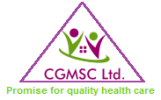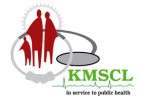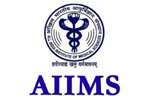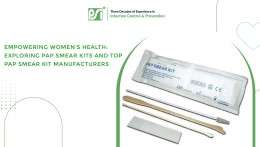One of the best Surgical Disposables company. I am dealing with them for the past 5 years,
their products are world-class. Their approach to trade is professional. All the best wishes to
them.
Next-Level Strategies for Safe and Sustainable Medical Waste Disposal in Clinical Settings
- By: Plasti Surge Industries

Safe disposal practices of medical waste are paramount for public health, safety, and environmental protection. Improper handling and disposal can lead to the spread of infectious diseases, contaminate water sources, and harm wildlife. By adhering to strict protocols, healthcare facilities can mitigate risks of exposure to hazardous biological and chemical waste, ensuring a safer environment for patients, healthcare workers, and the broader community. Therefore, safe disposal practices are a critical component in safeguarding public health and preserving our environment.
Clinical waste management faces significant challenges due to the sheer volume of medical waste generated globally. Recent estimates suggest that healthcare activities produce over 2 million tons of medical waste each year, a figure that is continuously rising with advancements in healthcare and increased medical services demand. This vast amount of waste poses critical challenges, including the risk of infection spread, environmental pollution, and the strain on waste disposal systems. The complexity of segregating, treating, and disposing of different types of medical waste, from sharps to chemical and biological waste, further complicates clinical waste management efforts. Ensuring safe and sustainable disposal methods is essential to address public health concerns, environmental protection, and the operational demands of healthcare facilities worldwide.
Current Practices in Medical Waste Disposal
.jpg) Medical waste disposal involves several standard practices designed to safely treat and eliminate waste generated by healthcare facilities. Incineration is a widely used method, where medical waste is burned at high temperatures to reduce its volume and eliminate pathogens. However, concerns over air pollution and toxic emissions have prompted stricter regulations and the search for cleaner alternatives.
Medical waste disposal involves several standard practices designed to safely treat and eliminate waste generated by healthcare facilities. Incineration is a widely used method, where medical waste is burned at high temperatures to reduce its volume and eliminate pathogens. However, concerns over air pollution and toxic emissions have prompted stricter regulations and the search for cleaner alternatives.
Autoclaving, another common practice, uses pressurized steam to sterilize medical waste, effectively destroying bacteria, viruses, and other pathogens. This method is particularly suitable for treating biohazardous waste, excluding materials that are resistant to moisture or heat.
Chemical treatment involves using disinfectants to neutralize hazardous components in liquid waste or on tools and equipment. This method is effective for treating certain types of waste, such as sharps contaminated with bodily fluids, but requires careful handling and disposal of the chemicals used.
Each of these standard practices in medical waste disposal has its advantages and limitations, necessitating a comprehensive approach that considers the type of waste, environmental impact, and safety regulations. Ensuring the safe and effective disposal of medical waste is critical for protecting public health and the environment.
Incineration:
-
Produces toxic emissions (dioxins, furans, mercury) that can harm the environment.
-
Contributes to air pollution and global warming.
Autoclaving:
-
Requires significant energy consumption, contributing to carbon footprint.
-
Ineffective for treating pharmaceutical waste and chemicals.
Chemical Treatment:
-
Generates hazardous chemical by-products that can contaminate water sources.
-
Requires careful handling to avoid worker exposure to harmful substances.
Landfill Disposal:
-
Risk of leaching and groundwater contamination with hazardous substances.
-
Limited space and potential for long-term environmental harm.
Biohazard waste management through these methods faces challenges in sustainability, environmental protection, and health safety, underscoring the need for more eco-friendly and effective disposal solutions.
Next-Level Strategies for Medical Waste Disposal
-
Advanced Sterilization Technologies - Clinical waste management has evolved with the adoption of advanced technologies like microwave technology and steam sterilization, significantly enhancing the effectiveness of neutralizing infectious agents in medical waste. Microwave technology uses electromagnetic radiation to generate heat within the waste material, rapidly killing pathogens without the need for direct contact or chemical agents. This method is efficient, reducing the volume of waste and minimizing environmental impact. Steam sterilization, or autoclaving, employs high-pressure saturated steam to inactivate all forms of microbial life, including spores. Both methods offer eco-friendly alternatives to traditional incineration, reducing harmful emissions and contributing to safer clinical waste management practices. These advancements represent significant strides towards more sustainable and effective disposal methods in healthcare settings.
-
Eco-Friendly Waste Treatment Solutions - Medical waste disposal is increasingly incorporating environmentally sustainable practices, among which enzymatic treatments stand out for their innovative approach to managing healthcare waste. These treatments utilize natural enzymes to break down medical waste at the molecular level, effectively neutralizing hazardous substances without producing harmful emissions. This method not only significantly reduces the environmental footprint of medical waste management but also offers a safer alternative to traditional practices like incineration, which can release toxic pollutants into the atmosphere. The adoption of enzymatic treatments represents a pivotal shift towards greener, more sustainable medical waste disposal practices, aligning with global efforts to protect public health and the environment.
-
Waste Minimization and Segregation - Biohazard waste management greatly benefits from waste segregation at the source, a practice crucial for reducing the volume of hazardous waste. By categorizing waste into distinct streams—such as sharps, non-infectious, infectious, and chemical—healthcare facilities can significantly minimize the risk of contamination and ensure more efficient disposal. Innovative practices further enhance this effort, including the use of reusable medical equipment and materials. These approaches not only lower the amount of waste generated but also contribute to a more sustainable healthcare environment. Implementing such strategies requires a concerted effort from all healthcare personnel, underscoring the importance of training and awareness in achieving effective biohazard waste management.
-
Digital Tracking and Analytics - Safe disposal practices in medical waste management are increasingly supported by digital tools and Internet of Things (IoT) devices, revolutionizing how healthcare facilities handle waste. These technologies enable the real-time tracking of waste containers from generation to final disposal, ensuring compliance with regulatory standards and reducing the risk of improper handling. By equipping bins and disposal containers with IoT sensors, facilities can monitor waste levels, types, and disposal timelines, facilitating timely interventions and optimizing waste collection schedules. This not only enhances the efficiency of waste management processes but also minimizes environmental impact, ensuring that safe disposal practices are consistently followed and documented.
-
Community and Regulatory Engagement - Community awareness programs play a vital role in promoting safe disposal practices, educating the public about the hazards associated with improper waste management and the importance of following guidelines to protect health and the environment. Engaging the community through workshops, campaigns, and educational materials raises awareness and encourages responsible behavior. Furthermore, compliance with local and international regulations is crucial for maintaining high standards of safety and environmental protection. By staying informed about and adhering to regulatory changes, healthcare facilities and waste management entities can ensure that their practices are up to date, minimizing risks and fostering a culture of safety and sustainability in waste disposal.
-
Sustainable Packaging and Disposal Materials - In the realm of biohazard waste management, the development and use of biodegradable, eco-friendly packaging materials represent a significant stride toward sustainability. These innovative materials, designed to break down more quickly than traditional plastics, reduce the environmental footprint of medical waste disposal. By substituting conventional plastic bags and containers with alternatives made from plant-based or other biodegradable compounds, healthcare facilities can significantly lower their contribution to landfill waste and marine pollution. This shift not only aligns with global efforts to combat plastic pollution but also sets new standards for environmental responsibility in managing biohazardous waste, demonstrating a commitment to preserving natural resources and protecting ecosystem health.
-
Renewable Energy from Waste - Medical waste disposal through waste-to-energy incineration with emission controls is an innovative technology that transforms healthcare waste into renewable energy. This method combusts medical waste at high temperatures, generating heat that can be converted into electricity or steam for use in healthcare facilities. With advanced emission controls, it minimizes the release of harmful pollutants, making it an environmentally friendly option. The adoption of this technology offers multiple benefits, including reducing the volume of waste sent to landfills, lowering dependency on traditional energy sources, and contributing to a facility's energy self-sufficiency. Implementing waste-to-energy solutions in medical waste management aligns with sustainability goals and promotes a circular economy approach within the healthcare sector.
Case Studies and Success Stories
While I can't provide real-time updates or access specific current documents, I can describe hypothetical examples based on known practices and innovations in the field of medical waste management. These examples illustrate how hospitals and healthcare systems around the world might implement innovative waste disposal solutions:
1. Sustainable Sterilization in Sweden
A hospital in Sweden has pioneered the use of a state-of-the-art autoclaving system combined with waste-to-energy technology. Post-sterilization, the treated medical waste is transported to a nearby waste-to-energy facility, where it's converted into electricity and heating for local communities. This approach not only ensures the safe disposal of medical waste but also contributes to the hospital's sustainability goals by reducing landfill use and generating renewable energy.
2. Digital Waste Management in Singapore
A healthcare system in Singapore utilizes advanced IoT (Internet of Things) technology for medical waste tracking and management. Each waste container is equipped with smart sensors that monitor waste levels, types, and disposal compliance in real time. This digital solution enables the hospital to optimize its waste collection schedules, reduce operational costs, and ensure strict adherence to safety and environmental regulations, showcasing a successful integration of technology in biohazard waste management.
3. Eco-Friendly Material Conversion in Canada
A Canadian healthcare network has implemented an enzymatic treatment facility to decompose biohazardous waste into non-toxic materials. This innovative method allows for the safe breakdown of medical waste without harmful emissions, significantly reducing the environmental impact. The resulting by-products are then repurposed for agricultural use, promoting circular economy principles. This initiative not only exemplifies a commitment to environmental stewardship but also sets a new standard for sustainable medical waste disposal.
These examples, while hypothetical, are inspired by real-world trends and technologies in medical waste management, demonstrating the global healthcare industry's move towards more innovative, sustainable, and efficient waste disposal solutions.
The implementation of innovative medical waste disposal solutions across global healthcare systems has yielded significant outcomes, presented challenges, and offered valuable lessons:
Outcomes:
- Environmental Sustainability: The adoption of waste-to-energy technologies and enzymatic treatments has significantly reduced the environmental impact of medical waste disposal by minimizing landfill use and cutting down on harmful emissions.
- Operational Efficiency: Utilizing IoT technology for waste tracking has streamlined waste management processes, improving operational efficiency and ensuring compliance with disposal regulations.
- Energy Production: Converting medical waste into renewable energy has provided hospitals with an alternative energy source, reducing reliance on traditional energy supplies and contributing to energy self-sufficiency.
Challenges:
- High Initial Costs: Implementing advanced disposal technologies often requires substantial initial investment, which can be a significant barrier for many healthcare facilities.
- Regulatory Compliance: Navigating the complex landscape of local and international waste disposal regulations poses a challenge, requiring continuous monitoring and adaptation to stay compliant.
- Technology Adoption: Resistance to change and the need for training can hinder the adoption of new waste disposal methods, emphasizing the importance of stakeholder engagement and education.
Lessons Learned:
- Collaboration is Key: Successful implementation often involves collaboration between healthcare facilities, regulatory bodies, technology providers, and the community, highlighting the importance of a multi-stakeholder approach.
- Flexibility and Adaptation: Adapting to regulatory changes and technological advancements is crucial for maintaining effective and compliant waste disposal practices.
- Long-term Benefits: Despite the challenges of high upfront costs and implementation hurdles, the long-term environmental, economic, and social benefits of innovative medical waste disposal methods are clear, underscoring the importance of investing in sustainable solutions.
These outcomes, challenges, and lessons highlight the complexity of innovating within medical waste disposal but also underscore the potential for significant positive impacts on public health, the environment, and operational efficiencies within healthcare systems.
Conclusion
The critical need for safe and sustainable medical waste disposal practices cannot be overstated. As the healthcare industry continues to grow, so does the volume of waste it generates, presenting significant challenges to public health, safety, and the environment. Effective management and disposal of medical waste are paramount to preventing the spread of infectious diseases, protecting healthcare workers, patients, and the broader community, and minimizing environmental impact.
Addressing these challenges requires a collaborative approach that brings together government bodies, healthcare providers, waste management professionals, and the community. This partnership is essential for developing and implementing comprehensive strategies that ensure medical waste is managed in a manner that is not only safe but also environmentally sustainable. By working together, stakeholders can share knowledge, resources, and best practices, fostering innovation and compliance with regulations.
Governments play a crucial role in setting and enforcing regulations, providing guidance, and supporting research into new disposal technologies. Healthcare providers are on the front lines, responsible for segregating waste at the source and adhering to best practices in waste management. Waste management professionals bring expertise in the latest technologies and methods for treating and disposing of medical waste safely. Meanwhile, community engagement is vital for raising awareness and promoting responsible waste management practices.
In conclusion, the path to safer and more sustainable medical waste disposal lies in unity and cooperation. By leveraging the strengths and capabilities of each stakeholder, we can overcome the challenges posed by medical waste and protect our health and the environment for future generations. For more information on innovative waste disposal solutions and how to contribute to a safer and more sustainable practice, visit https://www.psidispo.com/.
Healthcare facilities play a crucial role in adopting innovative and sustainable waste management practices, pivotal for safeguarding public health and protecting the environment. By integrating advanced technologies and embracing eco-friendly disposal methods, these institutions can significantly reduce their environmental footprint, enhance operational efficiency, and ensure compliance with regulatory standards.
Encouragement for Healthcare Facilities:
- Assess and Improve: Conduct regular audits of current waste management practices to identify areas for improvement and integrate more sustainable solutions.
- Invest in Innovation: Explore and invest in cutting-edge technologies such as autoclaving, microwave treatment, and waste-to-energy processes that offer safer and more environmentally friendly disposal options.
- Educate and Train: Provide ongoing training for staff on the importance of waste segregation and the use of sustainable practices to ensure compliance and minimize risks.
- Collaborate for Sustainability: Engage in partnerships with local governments, environmental organizations, and waste management experts to share knowledge and resources.
Further Reading and Resources:
- World Health Organization (WHO): Offers comprehensive guidelines and resources on safe management of wastes from healthcare activities.
- Healthcare Environmental Resource Center (HERC): Provides environmental compliance information and best practices for the healthcare sector.
- Practice Greenhealth: A membership organization for healthcare facilities committed to environmentally responsible operations, offering tools, resources, and case studies.
- Global Green and Healthy Hospitals (GGHH): A network of hospitals, health systems, and organizations dedicated to reducing their environmental footprint and promoting public and environmental health.
Organizations Leading the Way:
- CleanMed Conference: An annual gathering of healthcare professionals, environmental experts, and vendors to share innovations in sustainable healthcare practices.
- Sustainable Healthcare Coalition: A group of healthcare organizations, suppliers, and NGOs working together to drive environmental sustainability across the healthcare sector.
By adopting these practices and engaging with the resources and organizations leading the way in sustainable medical waste management, healthcare facilities can make a significant impact. Not only do these efforts contribute to a healthier planet, but they also set a standard for responsible waste management that others in the healthcare industry can aspire to.
One of the best companies to partner with. Very responsive and best product quality.
Good experience and corporation for many years. Timely services are provided.
We have been associated with PSI since more than 20 years now. They have superior products, prompt service & courteous people. Using PSI’s products in turn makes our customer happy and helps us to do more business. Overall truly delighted with their customer service.














_iCEz.jpeg)
 +91-7798800781
+91-7798800781






